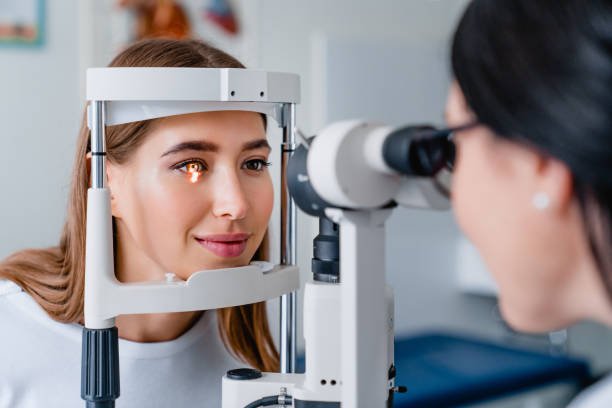Choosing the right Swastik Eye clinic is crucial for maintaining optimal eye health and ensuring effective vision care. With approximately 2.2 billion people worldwide experiencing some form of vision impairment, the stakes for proper eye care are high. Alarmingly, around 1 billion of these cases involve conditions that could have been prevented or are still untreated. This underscores the importance of selecting a clinic that offers comprehensive and effective eye care solutions.
In this article, we aim to guide you through five essential factors to consider when choosing an eye clinic.
1. Qualifications and Experience of the Staff
When choosing an eye clinic, the credentials and experience of the staff are paramount. Optometrists and ophthalmologists should have relevant qualifications and a proven track record in eye care. It’s essential to verify their certifications and areas of specialization, such as pediatric care, glaucoma, or retinal disorders, to ensure they can address specific needs.
Additionally, ongoing education plays a crucial role in maintaining high care standards. Eye care professionals should engage in continuous training and certification to stay updated with the latest advancements and techniques. This commitment to professional development enhances their ability to deliver the most effective and cutting-edge treatments. By evaluating the qualifications, specializations, and continuing education of the clinic’s staff, you can be confident in receiving comprehensive and up-to-date eye care.
2. Range of Eye-Care Services Offered
Comprehensive eye exams are fundamental for the accurate diagnosis and effective treatment of various eye conditions. These exams should thoroughly assess vision and eye health to address both routine and complex issues. Additionally, check for the availability of advanced surgical options, such as LASIK or cataract surgery. A clinic equipped to perform these procedures can offer solutions for vision correction and cataract management.
Emergency care is another vital service to consider. The clinic should provide access to urgent care for unexpected eye conditions or injuries, ensuring prompt and appropriate treatment when needed. Evaluating the breadth of services offered ensures that the clinic can meet all your eye care needs, from routine exams to specialized treatments and emergencies.
3. Technology and Equipment
The technology and equipment used by an eye clinic are critical for providing high-quality care. Modern diagnostic tools, such as Optical Coherence Tomography (OCT) and corneal topography, offer detailed imaging that enhances the accuracy of diagnoses and allows for early detection of eye conditions. State-of-the-art treatment equipment is also essential for effective management of various eye issues. Clinics equipped with advanced technology can provide more precise and less invasive treatment options.
Moreover, regular maintenance and upgrades of equipment are crucial to ensuring reliability and optimal performance. Clinics that prioritize updating their technology can offer the latest advancements in eye care, contributing to better outcomes and improved patient experiences. Evaluating a clinic’s technology and equipment helps ensure you receive the most accurate diagnosis and effective treatment available.
4. Clinic Environment and Accessibility
The environment and accessibility of an eye clinic significantly impact your overall experience. First, consider the clinic’s location—choosing one that is conveniently situated near your home or workplace can make visits easier and less time-consuming. The cleanliness and comfort of the facility are also crucial. A well-maintained, clean environment not only promotes a sense of trust and professionalism but also contributes to a more pleasant visit. Comfortable waiting areas and treatment rooms enhance the patient experience.
Accessibility features are important for accommodating all patients, including those with disabilities. Ensure the clinic has ramps, elevators, and other accessibility measures to facilitate ease of access. By focusing on these aspects, you can select a clinic that offers both convenience and a welcoming environment for all patients.
5. Patient Reviews and Reputation
When evaluating an eye clinic, patient reviews and the clinic’s reputation are key indicators of quality. Start by checking online reviews and ratings on platforms like Google or Yelp. These reviews can provide insights into the experiences of other patients and highlight both strengths and potential concerns. Personal referrals from friends or family can also be valuable. Recommendations from those you trust can offer a reliable perspective on the clinic’s service quality and overall patient satisfaction.
Additionally, researching the clinic’s history, accolades, and certifications can further inform your decision. Look for any awards or industry recognitions that reflect the clinic’s commitment to excellence. By considering patient feedback, personal recommendations, and the clinic’s reputation, you can make a well-rounded choice for your eye care needs.
Conclusion
In summary, selecting the right eye clinic involves evaluating several crucial factors: the qualifications and experience of the staff, the range of services offered, the technology and equipment used, the clinic’s environment and accessibility, and patient reviews and reputation. Each of these elements plays a vital role in ensuring you receive the highest quality of care for your eye health and vision needs.
By carefully considering these factors, you can find a clinic that aligns with your individual requirements and preferences. To take the next step in securing excellent eye care, consider scheduling a consultation with Swastik Eye care. Their commitment to providing comprehensive, cutting-edge eye care can help you achieve and maintain optimal vision health.

